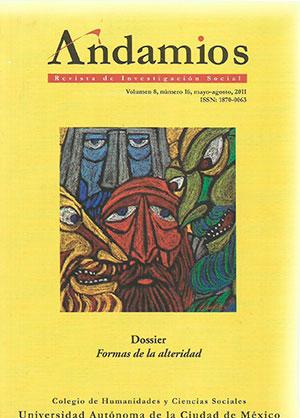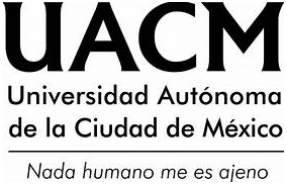Otras formas de turismo patrimonial. El caso de las ex haciendas de Xalapa
DOI:
https://doi.org/10.29092/uacm.v8i16.474Palabras clave:
Turismo patrimonial, ex haciendas, Xalapa, nuevos turismos, casos anómalosResumen
Durante los últimos tres decenios el turismo patrimonial ha experimentado un notable auge, el cual ha sido acompañado por la aparición de unos campos temáticos y de unas líneas de análisis similares, de manera que en el debate académico se ha consolidado también el turismo patrimonial como tópico. El presente artículo ofrece un caso aún no cumplido o anómalo de conversión en turismo patrimonial: las ex haciendas de la región de Xalapa, Veracruz. La discusión de este caso ayuda a repensar y a reabrir las asunciones implícitas de este tópico del turismo patrimonial, de manera que se presentan otras formas de visita y relación con estos enclaves turísticos situados en la región estudiada.
Descargas
Citas
Alfrey, J., Putnam, T. (2004), The Industrial Heritage: Managing Resources and Uses, Londres: Routledge.
Bendix, R. (1989), “Tourism and Cultural Displays: Inventing Traditions for Whom?”, en The Journal of American Folklore, vol. 102, núm. 404, abril-junio, Champaign, il: University of Illinois Press/American Folklore Society, pp. 131-146.
Breglia, L. (2006), Monumental Ambivalence: The Politics of Heritage, Austin, tx: University of Texas Press.
Brett, D. (1996), The Construction of Heritage, Dublín: Cork University Press.
Carr, A. (2004), “Mountain Places, Cultural Spaces: The Interpretation of Culturally Significant Landscapes”, en Journal of Sustainable Tourism, vol. 12, núm. 5, septiembre, Londres: Routledge, pp. 432-459.
Cole, D. (2004), “Exploring the Sustainability of Mining Heritage Tourism”, en Journal of Sustainable Tourism, vol. 12, núm. 6, diciembre, Londres: Routledge, pp. 480-494.
H. Congreso de los Estados Unidos Mexicanos (1972), Ley Federal sobre Monumentos y Zonas Arqueológicos, Artísticos e Históricos, México: Presidencia de la República/H. Congreso de los Estados Unidos
Mexicanos.
Cuccia, T., Cellini, R. (2007), “Is Cultural Heritage Really Important for Tourists? A Contingent Rating Study”, en Applied Economics, vol. 39, núm. 2, febrero, Londres: Routledge, pp. 261-271.
Dicks, B. (1999), “The View of Our Town from the Hill: Communities on Display as Local Heritage”, en International Journal of Cultural Studies, vol. 2, núm. 3, diciembre, Londres: Sage, pp. 349-368.
__________ (2003), “Heritage, Governance and Marketization: a Case-study from Wales”, en Museum and Society, vol. 1, núm. 1, marzo, Leicester, UK: Museum and Society, pp. 30-44.
Dirección General de Ordenamiento Urbano y Regional (DGOUR), Secretaría de Desarrollo Regional (2008), Ingenios y Haciendas de la Región de Xalapa (Inédito), Xalapa: Gobierno del Estado de Veracruz.
Gable, E., Handler, R. (1996), “After Authenticity at an American Heritage Site”, en American Anthropologist, vol. 98, núm. 3, septiembre, Arlington, VA: American Anthropological Association/Blackwell, pp. 568-578.
Hall, S. (2005), “Whose Heritage? Unsettling the Heritage, Reimaging the Postnation”, en Jo Littler, Roshie Naidoo (eds.), The Politics of Heritage: The Legacies of Race, Londres: Routledge, pp. 23-35.
Hampton, M. P. (2005), “Heritage, Local Communities and Economic Development”, en Annals of Tourism Research, vol. 32, núm. 3, julio, Amsterdam: Elsevier, pp. 735-759.
Harrison, D., Hitchcock, M. (eds.) (2005), The Politics of World Heritage: Negotiating Tourism and Conservation, Clevedon, UK: Channel View Publications.
Harvey, D. (1990), “Between Space and Time: Reflections on the Geographical Imagination”, en Annals of the Association of American Geographers, vol. 80, núm. 3, septiembre, Washington,
DC: Association of American Geographers/Routledge, pp. 418-434.
Horkheimer, M. (1982), Historia, metafísica y escepticismo, Madrid: Alianza.
Lagerkvist, C. (2006), “Empowerment and Anger: Learning how to Share Ownership of the Museum”, en Museum and Society, vol. 4, núm. 2, julio, Leicester, uk: Museum and Society, pp. 52-68.
McKercher, B., Ho, P. S. Y., DU Cros, H. (2005), “Relationship between Tourism and Cultural Heritage Management: Evidence from Hong Kong”, en Tourism Management, vol. 26, núm. 4, agosto, Amsterdam: Elsevier, pp. 539-548.
__________, Ho, P. S. Y. (2006), “Assessing the Tourism Potential of Smaller Cultural and Heritage Attractions”, en Journal of Sustainable Tourism, vol. 14, núm. 5, septiembre, Londres: Routledge, pp. 473-488.
McLuhan, M., Powers, B. (1989), The Global Village: Transformations in World Life and Media in the 21st Century, Oxford: Oxford University Press.
Olwig, K. F. (1999), “The Burden of Heritage: Claiming a Place for a West Indian Culture”, en American Ethnologist, vol. 26, núm. 2, mayo, Nueva York: American Ethnological Society/Blackwell, pp. 370-388.
Sant Cassia, P. (1999), “Tradition, Tourism and Memory in Malta”, en Journal of the Royal Anthropological Institute, vol. 5, núm. 2, junio, Londres: The Royal Anthropological Institute/Wiley, pp. 247-263.
Strohmayer, U. (1997), “Modernity and the Restructuring of the Present in Historical Geographies”, en Geografiska Annaler: Series A, Physical Geography, vol. 79, núm. 3, octubre, Estocolmo-Uppsala: The Swedish Society for Anthropology and Geography/Wiley, pp. 155-169.
Weiss, L. (2007), “Heritage Making and Political Identity”, en Journal of Social Archaeology, vol. 7, núm. 3, octubre, Londres: Sage, pp. 413-431.
Willson, G. B., McIntosh, A. J. (2007), “Heritage Buildings and Tourism: An Experiential View”, en Journal of Heritage Tourism, vol. 2, núm. 2, Londres: Routledge, pp. 75-93.
World Bank (2001), Cultural Heritage and Development: A Framework for Action in the Middle East and North Africa, Washington, dc: The World Bank.
Ying, T., Zhou, Y. (2007), “Community, Governments and External Capitals in China’s Rural Cultural Tourism”, en Tourism Management, vol. 28, núm. 1, febrero, Amsterdam: Elsevier, pp.
-107.
Publicado
Número
Sección
Licencia
Esta revista está bajo una licencia Creative Commons México 2.5. Está permitida la reproducción y difusión de los contenidos de la revista para fines educativos o de investigación, sin ánimo de lucro, siempre y cuando éstos no se mutilen, y se cite la procedencia (Andamios, Revista de Investigación Social) y al autor. Los derechos patrimoniales de los artículos publicados en Andamios, Revista de Investigación Social son cedidos por el(los) autor(es) a la Universidad Autónoma de la Ciudad de México una vez que los originales han sido aceptados para que se publiquen y distribuyan tanto en la versión impresa como electrónica de la revista. Sin embargo, tal y como lo establece la ley, el(los) autor(es) conserva(n) sus derechos morales. El(los) autor(es) recibirá(n) una forma de cesión de derechos patrimoniales que deberá(n) firmar una vez que su original haya sido aceptado. En el caso de trabajos colectivos bastará la firma de uno de los autores, en el entendido de que éste ha obtenido el consentimiento de los demás. Los autores podrán usar el material de su artículo en otros trabajos o libros publicados por ellos mismos, con la condición de citar a Andamios como la fuente original de los textos.


